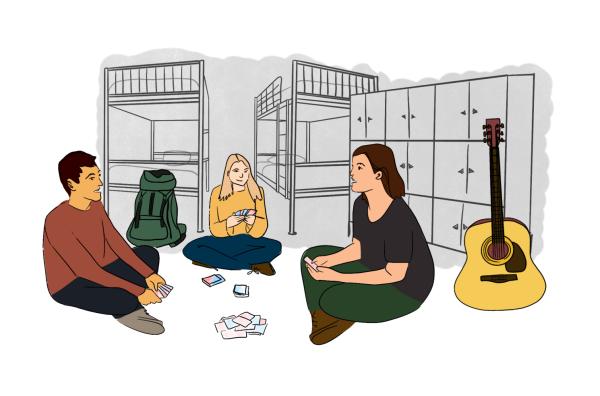Unpopular Opinions: Being in the Middle of Nowhere is Great
Isolation from numerous retail shops, big brands and restaurants typical of the rest of America is a defining feature of Colgate, one that has shaped its campus life for 200 years. As a result, today we see a college that is centrally planned, effectively bringing its students together in a condensed space. Hamilton’s population tops out at 4,108 people—barely larger than Colgate’s 2,800 students—which points to the influence the town feels from the university in forming its surrounding area. This influence might raise certain questions, such as, “what would Hamilton be like without Colgate?” and, even more perplexing, “what would Colgate be like in an urban area?”
Many students complain about the limited food options offered and lack of shopping on Lebanon and Utica Streets, which constitute Hamilton’s downtown. They ignore how this makeup creates a unique environment, one that is simple and community-oriented. Slices, Oliveri’s, Hamilton Whole Foods, the Hamilton Eatery and other restaurants are some of the favorites amongst Colgate students. If Hamilton were to expand its town, many of these restaurants could struggle financially with competing businesses entering into the market. Even now, the debate as to whether Slices is better than Oliveri’s has divided the student body. If a third pizza place were to open downtown, absolute anarchy would ensue. Who would win? More importantly, which pizza place would suffer as Colgate students business shifted among the three restaurants?
In 2018, No. 10 Tavern, a well known local bar and grill, closed after years of being a hallmark establishment. Rumors about its change of ownership circulated until it closed its doors for good. Its closing speaks to the reliance these small businesses have on Colgate students and faculty to maintain their income. With the addition of even one more store, students may feel that more options are entering into the scene when, in reality, the institutions of downtown Hamilton we love are put at risk.
Since the Hamilton and Colgate communities have so much overlap, many of the stores accept payment in the form of Gate Cards; this has saved me in times of need when I forgot my debit card in my dorm and I have to assume it’s helped others, too. Moreover, the acceptance of Gate Cards show the willingness of restaurants to work with the campus to create unity between the college and its neighbors.
One of the best parts of Hamilton’s size and isolation is the inevitability that you will run into friends and classmates in town. Many students’ reasons for applying to Colgate includes the allure that a small campus has in fostering an intimate environment away from home. Consider expanding Hamilton to incorporate more food chains that are so loved by college students, such as Chipotle or Starbucks. Not only would this impact small businesses, but it would also further divide students. With fewer options, Colgate students are forced to spend time with one another outside their classes. This is difficult to view as a negative, as I have come to learn how distinct and interesting each individual is on this campus. I doubt I would have met as many people as I have if Colgate was even remotely urbanized—and this makes sense given that the administration has chosen to keep the student body population low even though its applicants have increased.
It is an extremely gratifying feeling to walk into a coffee shop and have its employers familiar with your name. My friend who goes to the University of Southern California, located in the city of Los Angeles, will never be able to share the same pleasure I have received from having my coffee order memorized by the same barista I see everyday. A wonderful aspect of Colgate and its surrounding community is the confirmation that as a young academic you are recognized, respected and not “just a number” lost in a sea of 43,000 other students like at USC. The sense of familiarity that is gained from being restricted to a couple of shops in town provides a blanket of safety for its undergraduates that so many college campuses at big state schools and in urban areas lack.
Contact Ruth Reynolds at [email protected].











